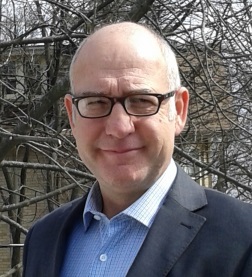- Home
- About Us
- The Team / Contact Us
- Books and Resources
- Privacy Policy
- Nonprofit Employer of Choice Award

 “No great thing is created suddenly, any more than a bunch of grapes or a fig. If you tell me that you desire a fig, I answer that there must be time. Let it first blossom, then bear fruit, then ripen.” Epictetus
“No great thing is created suddenly, any more than a bunch of grapes or a fig. If you tell me that you desire a fig, I answer that there must be time. Let it first blossom, then bear fruit, then ripen.” Epictetus
For years, most organizational strategic approaches to planned giving have been to invest a little and hope for a great return. That investment can be the occasional direct mail piece, a website section devoted to giving of this kind, buck slips, receipt message inclusion, etc. The list of tactical deployment is endless. The success of them is suspect.
For some organizations, this has worked. But for the vast majority of charities, it has meant sporadic or non-existent support. Organizations truly hoping to start and benefit from planned giving – whether a new program or elevating existing programs – require organizational commitment and dedicated resources. Every organization can have a planned giving program. But not every organization is committed to having a successful one.
Every organization can have a planned giving program
"Almost every organization can have a planned giving program of some kind", the late Dr. Ed Pearce, planned giving "guru" at Queen's University (and one of the pioneers of the planned giving profession) once said." If you have up to 100 donors, at least 10 per cent of them are prime prospects for planned gifts."
Whether you are considering a passive, active or proactive program, it is best to take these initial steps prior to doing anything else:
1. Bring your own organization on board: A planned giving program cannot operate without the full support of the decision-makers in your organization. Upper management must be fully convinced of the program's potential, and willing to provide support through funding, people and other resources.
2. Decide what gifts suit your organization: Depending on your organization's size and financial sophistication, you may choose to offer a number of different planned giving options. However, if the expertise and commitment aren’t there, don’t discuss or promote certain gifts. Too many organizations decide on what they will promote by looking to what other organizations are doing. We all know what our mothers said about our friends and jumping off the bridge. We must do what is right for our organization - not follow the wrong example toward activating a program.
3. Decide on a marketing strategy and "activate" your program: A marketing strategy is vital if a planned giving program is to achieve its maximum success rate. Program "activation" goes beyond simply starting the outreach to prospects. Communication strategies should fit resource levels and ensure that once outreach to the public is made, you are able to continue it. Before planning a marketing strategy, however, you must identify what "value" you can offer to your donors. In general, a planned giving program that is designed to obtain donations for a general endowment fund will be less successful than one aimed at something the donor can identify with.
4. Develop an action plan: An action plan spells out how you will implement your marketing strategy- and it helps to sell the program to the decision-makers in your organization. The action plan should specify what gifts you will offer, how you will market them and what support materials you will need. It should also indicate:
5. Have a planned giving mission statement: Your program has to have a reason for being and it has to be at the core of what you say to your prospects. Why this type of gift? What will it achieve that other gifts do not? And, where does the money go? Your donors need to know.
What makes for successful planned giving?
The single most important contributor to the success of planned giving is the sense of identification that the donor has with the organization. There are many that will feel this is obvious but it is extraordinary how few organizations do this from a position of stated purpose. Most assume donors know what they do and how they express their mission in the world. They are wrong. You donors need constant reinforcement. But if you provide it, they will respond to it.
Good communication is also a key factor in initiating and enhancing the understanding of the organization and its services for potential donors. This also allows the organization to inform potential donors about planned giving, a concept of which many are unaware. Too many programs focus only on the "heart" of the donor. That is half a message. The "head" also plays an enormously important part in the decision making to create a gift.
The need to invest in planned giving programs should always be expected. If a Board cannot see its way clear to spend money now in the expectation of a return several years down the road, it should not be looking at planned giving.
Ed Sluga, PGgrowth’s Managing Consultant, is one of Canada's most experienced planned giving professionals. For over 15 years, he has helped hundreds of organizations develop and benefit from long-term, sustainable and proactive fundraising and planned giving programs. www.pggrowth.com